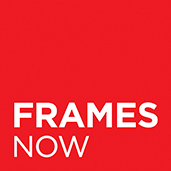Creating Magic with floating frames
These frames appear slim when viewed from the front, but are deep enough to accommodate stretched canvases.
-
Unlike traditional frames, floating frames don’t require a rebate to be cut into the top of the moulding, which keeps “normal” artwork (as well as the glass and backing board) in place. Instead, once these frames are assembled to the required size, the already-stretched canvas is dropped in from the front and secured in place from the rear.
-
Because of their simplicity, floating frames don’t vie for the attention of the artwork, and they fit in beautifully with most decors.
What does ” Float Frame ” actually mean?
By now you’re probably wondering… just why are they called floating frames?
-
It is quite common to include a small gap, usually just 5 to 10mm, between the edge of the canvas and the floating frame.
-
This exposes and accentuates the edges of the painting, as it gently wraps its way around the sides of the stretched canvas.
-
This is particularly important if the artist has painted their artwork in such a way that the image continues to wrap itself around the sides. By having a small gap, it means that none of this detail will be lost.
-
The end result is that your canvas painting will appear as if it’s hovering inside the frame, as if by magic… a floating frame!
Be inspired by our framing portfolio
Versatility of floating frames
These frames are quite versatile too, and aren’t just restricted to being used for stretched canvas paintings. These types of frames are perfect for framing
-
Digital photos and art printed onto photo canvas. Visit Unsplash for free high res digital images!
-
Any solid square or rectangular shaped artwork not requiring glass, such as mosaic tile art.
-
Blockmounted prints needing a simple and modern facelift.






